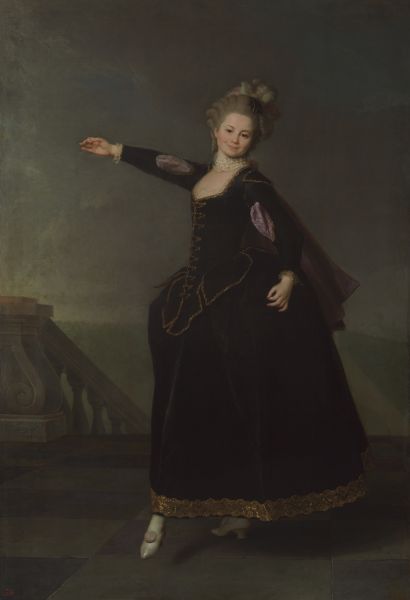|
|
Portret of Natalia Borscheva. 1776

Levitsky Dmitry,
Oil on canvas
196,5 х 134,5
State Russian Museum
Annotation
In the seventies of the 18th century Catherine II commissioned Levitsky to paint a series of "Smolyanki" that consisted of seven portraits of the pupils of the Smolny Institute for Noble Maidens – privileged educational establishment, opened in St. Petersburg in 1764 by decree of the Empress. Daughters of the nobles were preparing there for the Royal Court service and secular life. Talents that were "pleasant in society" were developed in girls. They were taught French and German languages, the elegant manners, as well as singing, dancing, playing musical instruments. The performances were often held in the Smolny Institute. Smolyanki acted out French comedies and also performed in ballet.
Borscheva (Barscheva) Natalia Semenovna (1758–1843) – the daughter of a retired “furjer” (the lower rank of non-commissioned officers) S.I. Borschev. From 1764 to 1776 she studied at the Educational Society of Noble Maidens, from which she graduated with a gold medal and the insignia (cipher) of Catherine II designed as a brooch in the shape of the Empress initial. In 1776 Borscheva Natalia Semenovna was the maid of honor of the Grand Duchess Maria Feodorovna. K.S. Musin-Pushkin was her first husband, the second – Major-General von der Hoven.
Borscheva (Barscheva) Natalia Semenovna is depicted in a ball gown in which she danced at the ball in the Educational Society of Noble Maidens.
Author's Biography
Levitsky Dmitry
Levitsky, Dmitry Grigoryevich
1735, Kiev - 1822, St Petersburg
Leading Russian eighteenth-century painter and portraitist. Son of Grigory Levitsky Nos, a priest and Ukrainian engraver. Moved to St Petersburg (c. 1758). Studied under Alexei Antropov. Worked in Moscow (17605). Nominated to the Academy (c. 1769). Academician (1770). Headed the portraiture class at the Imperial Academy of Arts (1771-87). Councillor (1776), member of the Academy council (1780). Retired for unknown reasons (1787). Worked as a free painter. Returned to the Academy council (1807).

